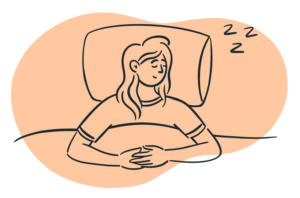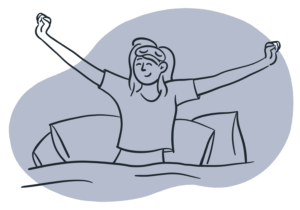Epilepsy and Sleep
Disclosure: By clicking on the product links in this article, Mattress Nerd may receive a commission fee at no cost to you, the reader. Read full disclosure statement.
Mattress Nerd consulted Dr. Bradley Katz, MD, PhD to ensure that this article met our editorial standards.
Epilepsy is one of the most common neurological conditions, affecting an estimated 5.1 million people in the United States. It affects people from all walks of life, including a few recognizable ones such as Edgar Allen Poe, Julius Caesar, Leonardo Da Vinci, Beethoven, and Socrates, to name a few.
Epilepsy is characterized by seizures — bursts of uncontrolled electrical activity in the brain that causes temporary abnormal muscle movements, behaviors, sensations, or states of awareness.
While epilepsy can occur at any time in someone’s life, the disease most commonly presents in older adults and children. Most children grow out of it in time, and 70 to 80 percent of the time seizures can be controlled with medication.
Since the beginning of the Middle Ages, philosophers, scholars, and laymen alike have been captivated by epilepsy. Once believed to be an act of the supernatural, researchers have gained a better understanding of epilepsy through the years, including the different types of seizures, their triggers, and how they impact sleep.
Interestingly, researchers have discovered that the relationship between epilepsy and sleep is reciprocal — epileptic seizures can occur at night and disrupt sleep. But insufficient sleep can also trigger seizures. But the opposite is also true: Getting epilepsy under control can improve sleep and vice versa.
Different types of epilepsy
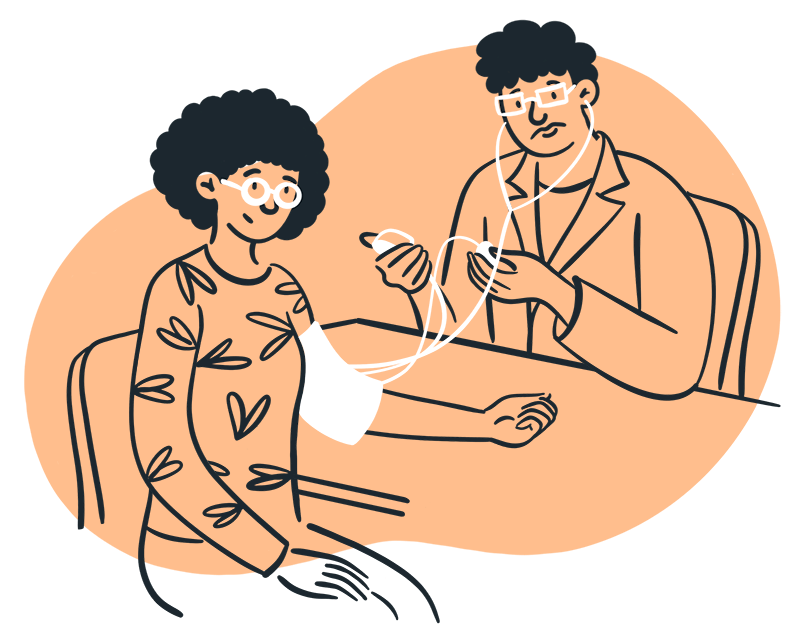
About 10 percent of people will experience a seizure at some point in their lives. But before someone is diagnosed with epilepsy, other conditions will be ruled out such as infections that affect the brain, head injuries, tumors, autoimmune conditions, or nutritional imbalances. An epilepsy diagnosis is often given after a person experiences several seizures over a period of time. Epileptic seizures vary depending on which part of the brain is affected. The two main categories of epileptic seizures are focal (partial) seizures and generalized seizures:
Focal seizures
Focal seizures, also called partial seizures, affect one area of the brain. They are often preceded by an aura or another “warning signal” that a seizure is about to occur, such as a feeling of déjà vu, impending doom, fear, or euphoria. Focal seizures can be simple, complex, or secondary generalized in nature:
Simple focal seizures affect a small part of the brain and can cause twitching or sensory changes such as a strange taste or smell.
Complex focal seizures can cause someone to feel confused or dazed. They may be unable to respond to questions or direction for a few minutes until the seizure has passed.
Secondary generalized seizures begin in one part of the brain and spread to both sides of the brain.
Generalized seizures
Generalized seizures occur on both sides of the brain and cause loss of consciousness. There are two groups of generalized seizures:
Absence seizures, sometimes called petit mal seizures, almost always begin in children between the ages of 4 and 12. Behaviors associated with absence seizures include:
- Blinking rapidly
- Staring off into space
Tonic-clonic seizures, also referred to grand mal seizures. They can cause behaviors such as:
- Muscle stiffness (tonic)
- Muscle relaxation (atonic)
- Short, jerking movements in parts of the body (myoclonic)
- Periods of shaking or jerking in parts of the body (clonic)
How can epilepsy affect sleep?
In the 1800s, British neurologist William Gowers recognized that about one in five of his patients with epilepsy experienced seizures solely in their sleep. This was confirmed in the 1930s by American neurologist and pioneer in electroencephalographic (EEG) technology Frederic Gibbs. Using EEGs, Gibbs found that as many as half of patients with a type of epileptic seizure known as generalized tonic-clonic had nocturnal seizures. And some people only had seizures while sleeping.
Researchers believe that nocturnal seizures are triggered by changes in the electrical activity in the brain as one moves through the different stages of sleep. “Changes in the electrical and hormonal activity of the brain occur throughout typical sleep wake cycles,” says Dr. Tabitha Cranie, an experienced family physician in St. Petersburg, Florida.
Sleep is divided into stages called REM (rapid eye movement) and non-REM (NREM) sleep. NREM sleep is further divided into three stages with sleep growing deeper as one progresses through the stages toward REM sleep. REM sleep is when dreaming most often occurs. People go through this sleep cycle about three or four times per night.
According to a study on childhood epilepsy and sleep, two-thirds of seizures occur during the night — between 8 p.m. and 8 a.m. Most nocturnal seizures occur right after falling asleep, just before waking, or soon after awakening. Nocturnal seizures can also happen during a daytime nap.
- Signs of nocturnal seizure include:
- Bedwetting
- Tongue biting
- Crying out or making unusual noises
- Muscle twitching or jerking
- Falling out of bed
- Strange movements or postures
- Suddenly waking
- Difficulty rousing after seizure
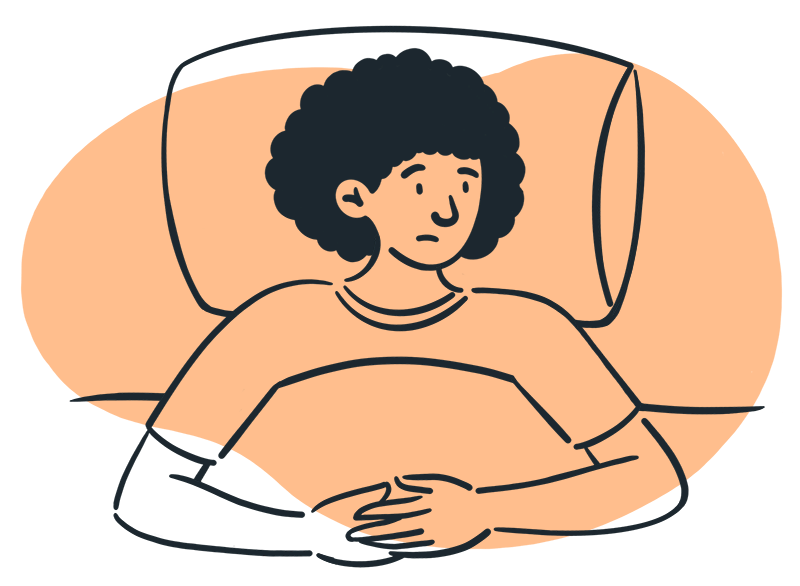
It can be difficult to diagnose seizures that occur while sleeping because the person experiencing them may not realize they are happening. Also, nocturnal seizures — particularly partial or focal seizures — can be mistaken for some sleep disorders, particularly parasomnias such as sleep terrors, nightmare disorders, and sleep paralysis.
Because nighttime seizures can disrupt sleep, if left untreated, they can result in excessive daytime sleepiness, lack of concentration, behavior problems, and diminished quality of life.
How can sleep affect epilepsy?
Research has shown that epilepsy can disrupt sleep and lead to sleep deprivation. In a cruel twist of fate, sleep deprivation has been found to be a primary trigger of seizures in people with epilepsy.
It is unclear why lack of sleep or poor sleep quality can increase the frequency of epileptic seizures. But researchers believe that it has to do with the changes in brain activity that occur when one is sleep deprived. Further complicating sleep for epileptics is that some medications can contribute to sleeping difficulties or daytime sleepiness. For example, a multicenter study of more than 500 patients taking anti-epileptic medications revealed that participants’ primary complaint was excessive daytime sleepiness.
Unfortunately, sleep problems run rampant among people with epilepsy. According to the American Journal of Managed Care (AJMC), approximately 70 percent of all epileptics experience problems with sleep and many experience sleep disorders as well. Some of the most common sleep disorders seen in epileptics include:
Sleep deprivation: “There is a bidirectional relationship between sleep and epilepsy, meaning they influence each other directly. This is why sleep deprivation is a factor that is normally used in the diagnosis of an epileptic seizure,” says Dr. Daniel Boyer with the Farr Institute. “Frequent sleep deprivation may lead to a seizure.”
Insomnia: Studies suggest that between 24 and 55 percent of people with epilepsy experience classic symptoms of insomnia —difficulty falling asleep or staying asleep throughout the night. Those with severe insomnia experienced less seizure control than those with milder cases of insomnia. Epileptics also have higher incidences of anxiety and depression compared to the general public, which likely contributes to the greater incidence of insomnia in people with epilepsy.
Obstructive sleep apnea: A study published in the journal Neurology found that one-third of patients undergoing epilepsy presurgical evaluation had sleep disordered breathing, the most common one being obstructive sleep apnea. Interestingly, several retrospective studies have shown that up to 60 percent of patients with drug-resistant epilepsy who underwent continuous positive airway pressure (CPAP) treatment experienced a 50 percent or greater reduction in seizure activity.
Parasomnias: These disruptive sleep-related disorders include sleep terrors, sleepwalking, nightmare disorder, sleep-related eating disorder, and sleep paralysis. And they are increasingly being reported in people with epilepsy, according to a group of Turkish researchers. This is especially true for people with frontal-lobe epilepsy. In many cases, it can be difficult to differentiate a nocturnal epileptic seizure from a parasomnia attack, they noted “especially if they coexist in the same patient.”
Children with epilepsy
Epilepsy affects about 1 percent of all children from birth through adolescence. Some children outgrow it. But for some, it is a lifelong condition, according to Hassenfeld Children’s Hospital at NYU Langone. There are several types of epilepsy that affect children. Childhood Absence Epilepsy (CAE) is a common epilepsy syndrome that affects children between 4 and 8 years of age. These seizures last about 10 to 20 seconds and end abruptly. Without treatment, CAE seizures can happen several times a day and may contribute to attention problems. Children usually outgrow CAE by late childhood.
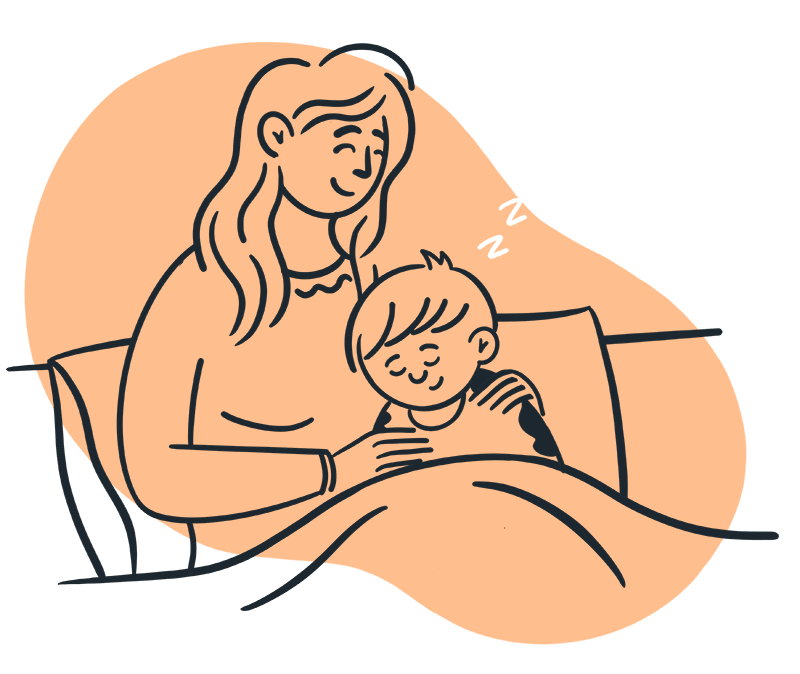
Juvenile Absence Epilepsy (JAE) typically begins between 10 and 16 years of age and is usually a lifelong condition. JAE absence seizures tend to last longer than CAE absence seizures — up to 45 seconds — and occur less frequently. About 80 percent of children diagnosed with JAE will also develop tonic-clonic seizures.
The most common generalized epilepsy syndrome is juvenile myoclonic epilepsy (JME), which is also referred to as Juvenile Myoclonic Epilepsy of Janz. JME typically begins in adolescence. These seizures often occur shortly after waking and in most cases, have genetic roots.
Sleep is crucial for children with epilepsy. Yet, like their adult counterparts, children with epilepsy are more likely to experience sleep problems compared to the general public. Research also shows that epileptic children had more problematic sleep disorders than children without the disease.
Epilepsy and sleep are tightly interwoven, thus controlling epilepsy will improve sleep quality while improving sleep will help control seizures, researchers said in a recent study published in the World Journal of Clinical Pediatrics. “Meticulous care of sleep pattern and quality in epileptic children has significant effects for diagnosis, efficacy of controlling seizure activity, and health-related quality of life,” they wrote. “Adequate studying of the sleep-related disorders and hormones may give a clue for new methods of better epilepsy control”
Tips for sleeping with epilepsy
Good sleep is a key part of managing epilepsy. Here are some tips on how to improve your sleep hygiene for a better night’s sleep:
- Create a nighttime routine. Establishing a bedtime routine helps prepare the body and the mind for sleep. About 30 minutes before bedtime, take a warm shower or bath, unplug the electronics, and read a book or listen to music.
- Create a comfortable sleep environment. Your bedroom and your child’s bedroom should be a sanctuary for sleep. Invest in a comfortable and supportive mattress; dress your bed in cool, comfortable linens; block out unwanted light with blackout shades or drapes; mask distracting noises with a sound machine, and set the thermostat a little cooler than it is during the day.
- Be sure to talk with your doctor before taking any over-the-counter sleep aids as they may interfere with medication to treat epilepsy.
- Talk to someone. An epilepsy diagnosis can cause plenty of worry and anxiety for both the individual and their parents or loved ones. Talking with a licensed professional counselor can help you process through the stress and improve your sleep.
Final Thoughts
People with epilepsy face a multi-edged sword when it comes to sleep. Seizures experienced during sleep can disrupt the sleep cycle leaving people feeling groggy the next day. Anti-epileptic medication can also make falling asleep difficult or cause daytime sleepiness. Furthermore, epileptics are more likely to experience anxiety, insomnia, and other sleep disorders.
But sleep is of vital importance especially for children with epilepsy. Excessive daytime sleepiness can exasperate the disease leading to increased seizure activity. It may feel like a never-ending cycle. But prioritizing sleep and improving sleep hygiene can greatly improve sleep quality and lead to an improved quality of life.
Meet Our Medical Reviewer
Dr. Bradley Katz, MD, PhD
Founder and Chief Scientist of Axon Optics. Dr Katz specializes in neuro-ophthalmology and evaluates patients with diseases that affect the optic nerve, diseases that affect eye movements and neurologic diseases that affect vision. Dr. Katz’s research interests include photophobia and neurologic conditions. Dr. Katz is a tenured Professor in the Department of Ophthalmology and Visual Sciences and holds an Adjunct appointment in the Department of Neurology at the University of Utah.
